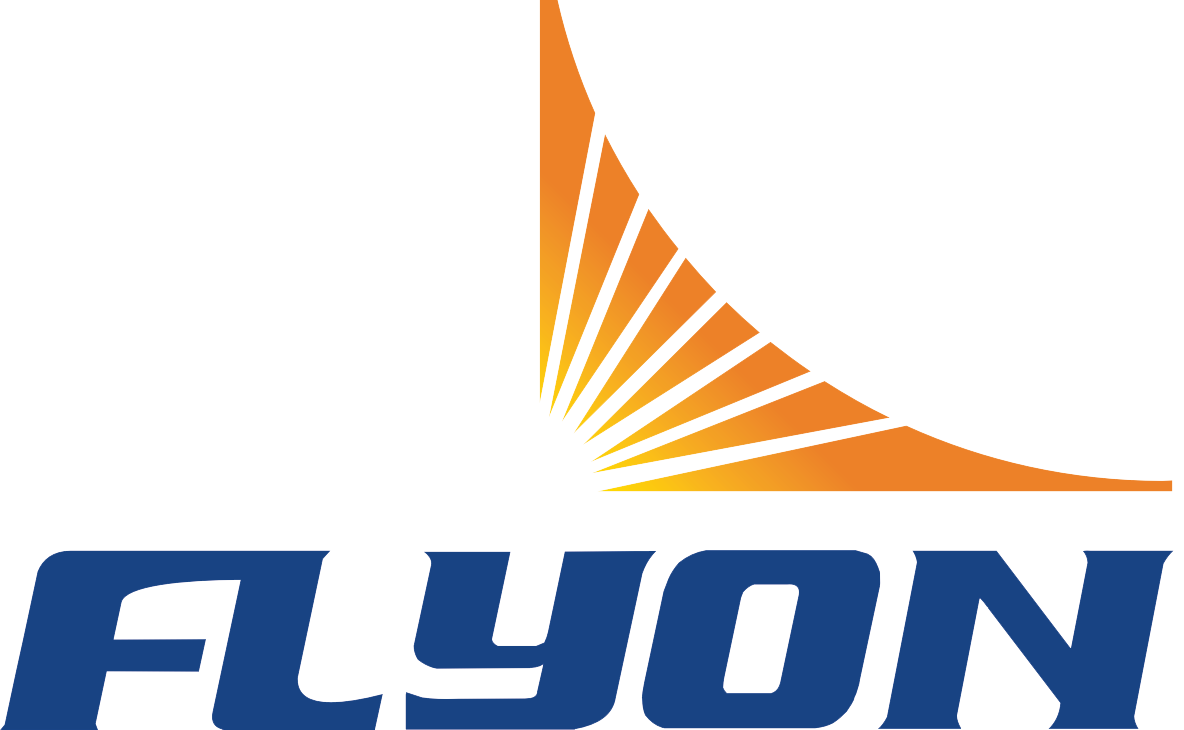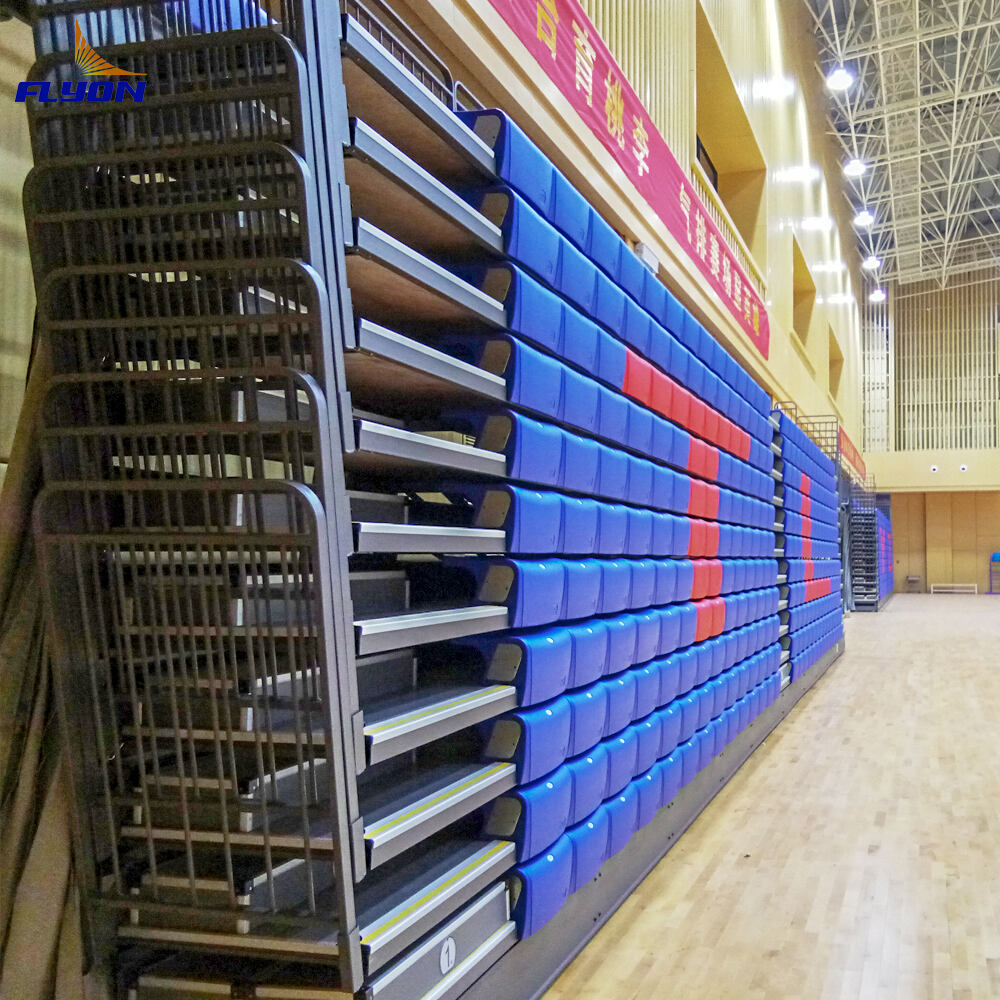Sự phát triển và nhu cầu về ghế khán đài rút gọn tại các địa điểm hiện đại
Hiểu rõ nhu cầu về chỗ ngồi sự kiện tạm thời
Ngày nay, các địa điểm tổ chức sự kiện đang bị dồn vào thế phải vừa tổ chức đủ loại hình sự kiện khác nhau, vừa duy trì hoạt động trơn tru mà không tốn nhiều thời gian ngưng nghỉ. Các trường học, công trình cộng đồng và cơ sở thể thao đã bắt đầu tập trung vào các hệ thống ghế khán đài linh hoạt, có thể biến những góc trống thành khu vực chỗ ngồi dành cho người dùng xe lăn chỉ trong vài giờ. Nhu cầu này là hoàn toàn thực tế trong thời điểm hiện tại. Theo số liệu từ LinkedIn năm ngoái, gần hai phần ba những người tổ chức sự kiện xếp 'lắp đặt và tháo dỡ nhanh chóng' lên hàng đầu trong danh sách mong muốn khi tìm kiếm địa điểm tổ chức, từ giải đấu bóng rổ đến lễ tốt nghiệp và các buổi biểu diễn âm nhạc.
Cách ghế khán đài rút gọn hỗ trợ thiết kế địa điểm đa mục đích
Các hệ thống ghế xếp telescop giúp các địa điểm linh hoạt chuyển đổi giữa các trận bóng rổ và hội chợ thương mại mà không làm mất diện tích sàn. Một trường trung học ở Ohio đã tăng gấp đôi doanh thu bằng cách sử dụng ghế khán đài rút gọn kết hợp với các nền tảng mô-đun để tổ chức cả sự kiện thể thao lẫn cuộc thi robot. Các lợi thế chính bao gồm:
- Phân Tầng Theo Chiều Dọc đảm bảo tầm nhìn thông suốt trong không gian diện tích nhỏ gọn
- Cơ chế kéo và khóa cho phép nhân viên triển khai 500 chỗ ngồi trong vòng 45 phút
- Hệ thống Phân phối Trọng lượng được đánh giá chịu tải 100 lbs trên mỗi foot dài
Thông tin dữ liệu: 68% Tăng trưởng về Số lượng Địa điểm Áp dụng Hệ thống Ghế Khán đài Di động (2020–2023)
Phân tích thị trường gần đây cho thấy sự gia tăng 68% trong việc lắp đặt ghế khán đài rút gọn kể từ năm 2020, do các trường học nâng cấp cơ sở hạ tầng cũ kỹ và các sân vận động mở rộng để phục vụ khán giả esports. Hiện nay, các hệ thống di động chiếm 41% tổng số dự án lắp đặt ghế mới cho các địa điểm —tăng từ mức 29% vào năm 2019—với các đơn vị tự động ghi nhận tốc độ áp dụng nhanh nhất tại các địa điểm tổ chức từ 10 loại sự kiện trở lên mỗi năm.
Ghế Khán đài Telescop Hoạt động như thế nào: Cơ chế và Thiết kế Vận hành
Giải thích Cơ chế Ghế Khán đài Xếp Telescopic
Các hệ thống khán đài rút gọn hiện đại hoạt động bằng các bậc thang liên kết với nhau, trượt dọc theo các ray kim loại được thiết kế đặc biệt. Những cấu trúc này dựa vào sự cân bằng trọng lượng và các nền tảng được bố trí thông minh để ghế có thể kéo dài ra khi tổ chức sự kiện hoặc gập lại thành không gian nhỏ gọn khi không sử dụng. Chất lượng của các hệ thống này cũng rất quan trọng. Hầu hết các nhà sản xuất sử dụng thép chắc chắn cho ray kết hợp với các con lăn bền bỉ, giúp chuyển động gần như im lặng. Và đừng quên các tính năng an toàn – cơ chế khóa giữ mọi thứ cố định chắc chắn, dù khán đài đang được mở rộng hoàn toàn trong ngày thi đấu hay được cất gọn sau sự kiện.
Hệ thống Vận hành Thủ công so với Tự động trong Khán đài Rút gọn
Các địa điểm thường chọn giữa hai chế độ vận hành:
- Hệ thống thủ công dựa vào cơ chế quay tay hoặc chốt nhả, yêu cầu 2–4 nhân viên để lắp đặt (phù hợp với các địa điểm nhỏ hơn và ít phải thay đổi cấu hình)
- Hệ thống tự động sử dụng điều khiển động cơ, cho phép triển khai bằng một người vận hành thông qua bảng điều khiển gắn trên tường hoặc điều khiển từ xa không dây. Ghế khán đài tự động giảm thời gian lắp đặt 65% so với các phương án thủ công.
Các Tính Năng Chính Cho Phép Thu Rút và Triển Khai Mượt Mà
Các yếu tố thiết kế quan trọng bao gồm cảm biến chống kẹt, mạch bảo vệ quá tải (đối với hệ thống động cơ), và con lăn phủ polymer giúp giảm ma sát tối đa. Cơ chế khóa kép — phanh thủy lực và chốt cơ học — ngăn chặn chuyển động bất ngờ trong suốt sự kiện.
Nghiên Cứu Thực Tế: Triển Khai tại Trung Tâm Thể Thao Đại Học có Sân Vận Động Đa Mục Tiêu
Một sân vận động 10.000 feet vuông của trường đại học khu vực Trung Tây đã giảm thời gian chuyển đổi từ bóng rổ sang hòa nhạc từ 8 giờ xuống còn 35 phút bằng cách lắp đặt ghế khán đài xếp chồng ba tầng. Hệ thống gồm 18 nền tảng điều khiển động cơ hiện nay có thể chứa 1.200 khán giả trong các trận đấu, đồng thời giải phóng 85% diện tích sàn để bố trí sân khấu, đạt mức lợi nhuận hàng năm (ROI) tăng 290% nhờ gia tăng số lượng sự kiện được đặt lịch.
Tối Ưu Hóa Không Gian và Tính Linh Hoạt của Sân Khấu với Ghế Ngồi Có Thể Thu Rút
Tối Đa Hóa Hiệu Quả Không Gian Sử Dụng Giải Pháp Ghế Gấp Di Động
Các địa điểm hiện đại tận dụng ghế khán đài rút gọn để giải quyết các thách thức về không gian thông qua cơ chế gập và cất trữ sáng tạo. Các hệ thống này có thể thu hồi 80–95% diện tích sàn trong vòng 15 phút sau sự kiện. Thiết kế nhỏ gọn cho phép các cơ sở tổ chức trận đấu bóng rổ vào buổi sáng và hội chợ thương mại vào buổi chiều mà không bị cản trở bởi chỗ ngồi cố định.
Tính Linh Hoạt Trong Cấu Hình Địa Điểm Trước Và Sau Sự Kiện
Các hệ thống rút gọn cho phép người vận hành chuyển đổi giữa các loại sự kiện thông qua ba điều chỉnh chính:
- Các hàng ghế trượt mở rộng từ 5 đến 20 dãy
- Vị trí lan can bảo vệ có thể thay đổi để phù hợp với mật độ khán giả khác nhau
- Các bề mặt sàn thay thế được (cao su thể thao so với gỗ đánh bóng)
Các cơ sở sử dụng ghế ngồi rút gọn tổ chức được số lượng sự kiện hàng tuần nhiều hơn 2,8 lần so với các cơ sở có ghế cố định.
Giải Quyết Thách Thức Về Sức Chứa Lớn Nhưng Dấu Chân Nhỏ Trong Thiết Kế Sự Kiện
Ghế khán đài rút gọn đáp ứng các yêu cầu mâu thuẫn thông qua:
- độ sâu ghế ngồi 18–24 inch, đáp ứng mật độ 1,2 khán giả trên mỗi foot vuông
- Các ngăn lưu trữ theo chiều dọc chỉ chiếm 8% diện tích mặt bằng sân vận động
- Các khối mở rộng mô-đun tăng thêm 35% sức chứa trong các trận playoff hoặc buổi hòa nhạc
Đột phá kỹ thuật này cho phép một hội trường 10.000 foot vuông tạm thời đón 850 người tham dự, đồng thời vẫn duy trì lối đi trống để thoát hiểm và bố trí gian hàng.
Tùy chỉnh và An toàn: Phù hợp Ghế khán đài rút gọn với nhu cầu sự kiện
Tùy biến Ghế khán đài rút gọn cho Thể thao, Hòa nhạc và Các sự kiện Học thuật
Ghế khán đài rút gọn cung cấp các cấu hình linh hoạt phục vụ nhiều loại sự kiện khác nhau:
- Thể thao : Tầm nhìn bậc thang với lan can gia cố dành cho môi trường năng động
- Các buổi hòa nhạc : Bố trí mô-đun cho phép khoảng cách hàng ghế trước gần sân khấu hoặc góc quay hướng về sân khấu
- Sự kiện Học thuật : Thiết kế nhỏ gọn với ghế có thể gập lên để phù hợp với lễ tốt nghiệp hoặc buổi giảng dạy
Các lựa chọn vật liệu (nhôm, gỗ hoặc composite) cho phép độ bền và phong cách phù hợp theo từng địa điểm. Một khảo sát địa điểm năm 2024 cho thấy 63% các sân đa năng hiện nay yêu cầu hệ thống ghế khán đài hỗ trợ ∣3 loại sự kiện.
Điều chỉnh bậc tầng và các tùy chọn tiếp cận phù hợp tiêu chuẩn ADA
Hướng dẫn của ADA yêu cầu lối đi và khu vực quan sát dành cho xe lăn tại mọi địa điểm công cộng. Các hệ thống rút gọn đáp ứng yêu cầu này thông qua:
- Các bậc đứng có thể tháo rời để tạo khu vực dành cho xe lăn
- Ramp tích hợp với độ dốc ∣5%
- 5–8% tổng số chỗ ngồi được dành riêng để tuân thủ ADA
Các mẫu thu gọn hiện đại đáp ứng tiêu chuẩn IBC và ASTM về chiều cao lan can (26"–42") và bảo vệ chống ngã.
Thiết kế mô-đun và đơn vị thương hiệu: Đáp ứng nhu cầu thẩm mỹ và chức năng
Các địa điểm ngày càng ưu tiên tích hợp thương hiệu với:
- Khung phủ lớp sơn tĩnh điện với màu sắc của trường/đội
- Logo dập nổi trên lưng ghế
- Các tấm ốp mặt trước tháo rời được để đặt biển quảng cáo nhà tài trợ
Các tiêu chuẩn an toàn và chứng nhận quan trọng đối với ghế công cộng
Tất cả các dãy ghế xếp lại được phải tuân thủ:
| Tiêu chuẩn | Phạm vi |
|---|---|
| IBC 2021 | Khả năng chịu tải (100 psf) |
| ASTM F1344 | Độ cứng của lan can bảo vệ |
| ICC 300-2017 | Kiểm tra hệ thống neo giữ |
Bề mặt chống trượt, lan can bảo vệ và đảm bảo khả năng chịu tải
Các bậc thang nhôm dập họa tiết kim cương giảm 72% nguy cơ trượt so với bề mặt trơn (CPSC 2022). Lan can phải chịu được lực ngang 200 lb, trong khi các chốt khóa đảm bảo độ ổn định trong các chu kỳ mở rộng và thu gọn.
Lựa chọn Hệ thống Ghế khán đài rút gọn phù hợp: Phân tích Lợi tức đầu tư và Đối tác lựa chọn
Đánh giá Kích thước địa điểm và Sức chứa đám đông dự kiến
Các hệ thống ghế khán đài rút gọn yêu cầu kích thước chính xác dựa trên kích thước địa điểm và yêu cầu sự kiện. Các cơ sở có trung bình 800–1.200 người tham dự cho các trận bóng rổ thường cần 15–20 hàng ghế trượt để đáp ứng tiêu chuẩn tầm nhìn, trong khi các địa điểm tổ chức hòa nhạc thường được hưởng lợi từ các mô-đun bổ sung linh hoạt để phục vụ mật độ khán giả thay đổi.
Phân tích chi phí - lợi ích: Giá trị dài hạn của ghế khán đài rút gọn tự động
Các hệ thống tự động cho thấy chi phí lao động thấp hơn 34% so với các phương án thủ công trong suốt vòng đời 15 năm (StadiumTech Review 2023). Mặc dù chi phí đầu tư ban đầu trung bình từ 220–380 USD mỗi chỗ ngồi khán giả, các địa điểm có thể thu hồi vốn thông qua tỷ lệ sử dụng hàng năm cao gấp 3–5 lần tại các sân vận động đa mục đích.
Hợp Tác Với Các Nhà Sản Xuất: Tầm Quan Trọng Của Hỗ Trợ Bảo Trì Và Đào Tạo
Các nhà sản xuất hàng đầu hiện nay cung cấp chức năng theo dõi bảo trì được kết nối IoT, giúp giảm 22% chi phí sửa chữa theo các nghiên cứu thực địa năm 2023. Hướng Dẫn Bảo Trì Cơ Sở 2024 nhấn mạnh chu kỳ bôi trơn định kỳ hàng quý và các chương trình chứng nhận nhân viên nhằm ngăn ngừa sự cố cơ học.
Tránh Rủi Ro: Bài Học Từ Các Sự Cố Lắp Đặt Không Đúng Cách
Một cuộc điều tra của OSHA năm 2022 phát hiện 61% chấn thương liên quan đến khán đài xuất phát từ việc kiểm tra tải trọng không đầy đủ trong quá trình lắp đặt. Việc xác minh độc lập về độ bền mối hàn và neo sàn có thể ngăn ngừa chi phí bồi thường trung bình 740.000 USD (Ponemon Institute 2023) liên quan đến các sự cố về kết cấu.
Câu hỏi thường gặp
Khán đài thu gọn là gì?
Ghế khán đài thu gọn là hệ thống chỗ ngồi được thiết kế để kéo dài ra khi sử dụng trong các sự kiện và thu lại khi không cần thiết, cho phép tận dụng hiệu quả không gian tại nhiều địa điểm khác nhau.
Ghế khán đài thu gọn mang lại lợi ích gì cho các địa điểm tổ chức sự kiện?
Chúng mang lại sự linh hoạt, cho phép các địa điểm tổ chức nhiều loại sự kiện khác nhau bằng cách điều chỉnh bố trí chỗ ngồi. Điều này giúp ban tổ chức sự kiện tối đa hóa việc sử dụng không gian và tổ chức được nhiều sự kiện hơn trong cùng một khu vực.
Ghế khán đài thu gọn có an toàn không?
Có, ghế khán đài thu gọn được thiết kế với các tính năng an toàn như cơ chế khóa, bề mặt chống trượt và tuân thủ các tiêu chuẩn như IBC và ASTM để đảm bảo an toàn cho khán giả.
Sự khác biệt giữa ghế khán đài thu gọn loại thủ công và tự động là gì?
Ghế khán đài thu gọn loại thủ công yêu cầu thao tác bằng tay, thường cần vài người để lắp đặt, trong khi loại tự động sử dụng hệ thống điều khiển động cơ, giảm thời gian lắp đặt và nhu cầu nhân lực.
Mục Lục
- Sự phát triển và nhu cầu về ghế khán đài rút gọn tại các địa điểm hiện đại
- Ghế Khán đài Telescop Hoạt động như thế nào: Cơ chế và Thiết kế Vận hành
- Tối Ưu Hóa Không Gian và Tính Linh Hoạt của Sân Khấu với Ghế Ngồi Có Thể Thu Rút
-
Tùy chỉnh và An toàn: Phù hợp Ghế khán đài rút gọn với nhu cầu sự kiện
- Tùy biến Ghế khán đài rút gọn cho Thể thao, Hòa nhạc và Các sự kiện Học thuật
- Điều chỉnh bậc tầng và các tùy chọn tiếp cận phù hợp tiêu chuẩn ADA
- Thiết kế mô-đun và đơn vị thương hiệu: Đáp ứng nhu cầu thẩm mỹ và chức năng
- Các tiêu chuẩn an toàn và chứng nhận quan trọng đối với ghế công cộng
- Bề mặt chống trượt, lan can bảo vệ và đảm bảo khả năng chịu tải
- Lựa chọn Hệ thống Ghế khán đài rút gọn phù hợp: Phân tích Lợi tức đầu tư và Đối tác lựa chọn
- Câu hỏi thường gặp
 EN
EN
 AR
AR
 FR
FR
 PT
PT
 RU
RU
 ES
ES
 BG
BG
 HR
HR
 CS
CS
 DA
DA
 NL
NL
 FI
FI
 DE
DE
 EL
EL
 HI
HI
 IT
IT
 JA
JA
 KO
KO
 NO
NO
 PL
PL
 RO
RO
 SV
SV
 CA
CA
 TL
TL
 ID
ID
 SR
SR
 SK
SK
 UK
UK
 VI
VI
 HU
HU
 TH
TH
 TR
TR
 MS
MS
 AZ
AZ
 KA
KA
 BN
BN
 LO
LO
 MN
MN
 MY
MY
 UZ
UZ


